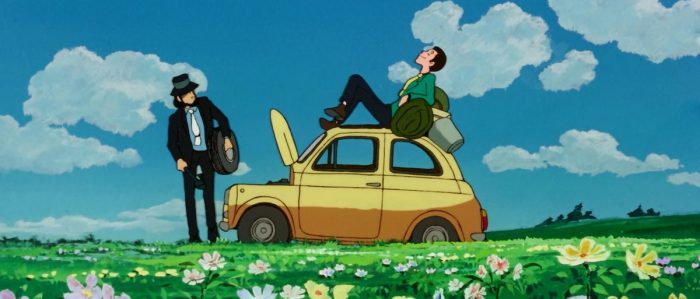
Yasuo Otsuka, a legendary figure of Japan’s animation industry and mentor to anime titans such as Hayao Miyazaki and Isao Takahata, has died. He was 89.
Otsuka’s incredible 50-year career in the anime industry — which started with the country’s very first color animated feature Hakujaden (AKA The White Snake Enchantress from 1958) — was paid tribute by Studio Ghibli producer Toshio Suzuki, who announced his death Monday. The cause was a heart attack, his family have told Japanese media, per Cartoon Brew.
Otsuka came of age with Japan’s young anime industry, joining Toei Doga (now Toei Animation), which aspired to establish itself as the Disney of the East, in 1956. At Toei, he would work as an animator on groundbreaking postwar productions such as Hakujaden, Magic Boy (1959), The Little Prince and the Eight-Headed Dragon (1963), and the anti-Communist propaganda film The Bear and the Children (1960). Otsuka was trained by Yasuji Mori, another legend of animation, and developed a style within Toei that was notably grounded and more full, in direct contrast with the limited style of popular TV anime at the time.
Otsuka would use his experience to mentor famous protégés like Hayao Miyazaki and Isao Takahata, who would go on to co-found Studio Ghibli. It would spark a long professional relationship between Otsuka and Studio Ghibli co-founders, with the animator collaborating on projects like Takahata’s feature directorial debut Hols: Prince of the Sun (1968) and the series Lupin the Third Part I (1971–72), as well as its follow-up film, and Miyazaki’s debut feature, Lupin the Third: The Castle of Cagliostro.
Born on July 11, 1931 in Japan’s Shimane prefecture, Otsuka’s love of drawing was sparked by a fascination with trains, and then the military vehicles which frequented Japan’s countryside in the aftermath World War II. Otsuka practiced drawing by sketching American trucks while reading comics left by occupying Allied soldiers. In 1956, Otsuka joined Toei and would help shape Japan’s young animation industry. It was there that he met junior animators Miyazaki and Takahata, who impressed him with their talents, leading Otsuka to persuade the studio to let Takahata direct his first feature, Hols.
In 1968, Otsuka moved to A Production, where he was later joined by Miyazaki and Takahata. There, the trio worked on such projects as the Lupin the Third Part I anime series, Takahata’s Panda! Go, Panda! tv specials (1972 & 1973), and Samurai Giants (1973–74), with Otsuka serving as animation director on all the titles. Otsuka continued to work with his longtime collaborators into the late ’70s and ’80s on projects like Miyazaki’s Future Boy Conan (1979) and The Castle of Cagliostro (1979), Chie the Brat, as well as the ill-fated Japanese-American co-production Little Nemo: Adventures in Slumberland (1989). He also would continue to work on new Lupin productions separately from Miyazaki and Takahata.
In his later years, Otsuka became less active as an animator and turned to education instead, mentoring young talents at the Toei Animation Research Institute and the Yoyogi Animation Academy. He has also written several books on the Japanese animation industry, with his book Sakuga Asemamire (aka Sweating over Animation) considered “a prime resource for the history of 1960s and 1970s anime.”
But Studio Ghibli never forgot the animator that helped its two core co-founders kickstart their careers. In 2004, Ghibli released a documentary Yasuo Otsuka’s Joy of Motion (2004) celebrating his career, while an exhibition of his art was held in Tokyo in 2002. Miyazaki has spoken frequently about his gratitude for Otsuka. “For me he is an excellent mentor,” he wrote in his 1982 essay “A ‘Slanderous’ Portrait.” “We did some foolish things together, but we’ve also talked passionately about the future of animation. It was Otsuka-san who taught me the fun of working.”
The post Yasuo Otsuka, Legendary Animator and Mentor of Hayao Miyazaki, Dead at 89 appeared first on /Film.
0 Comments